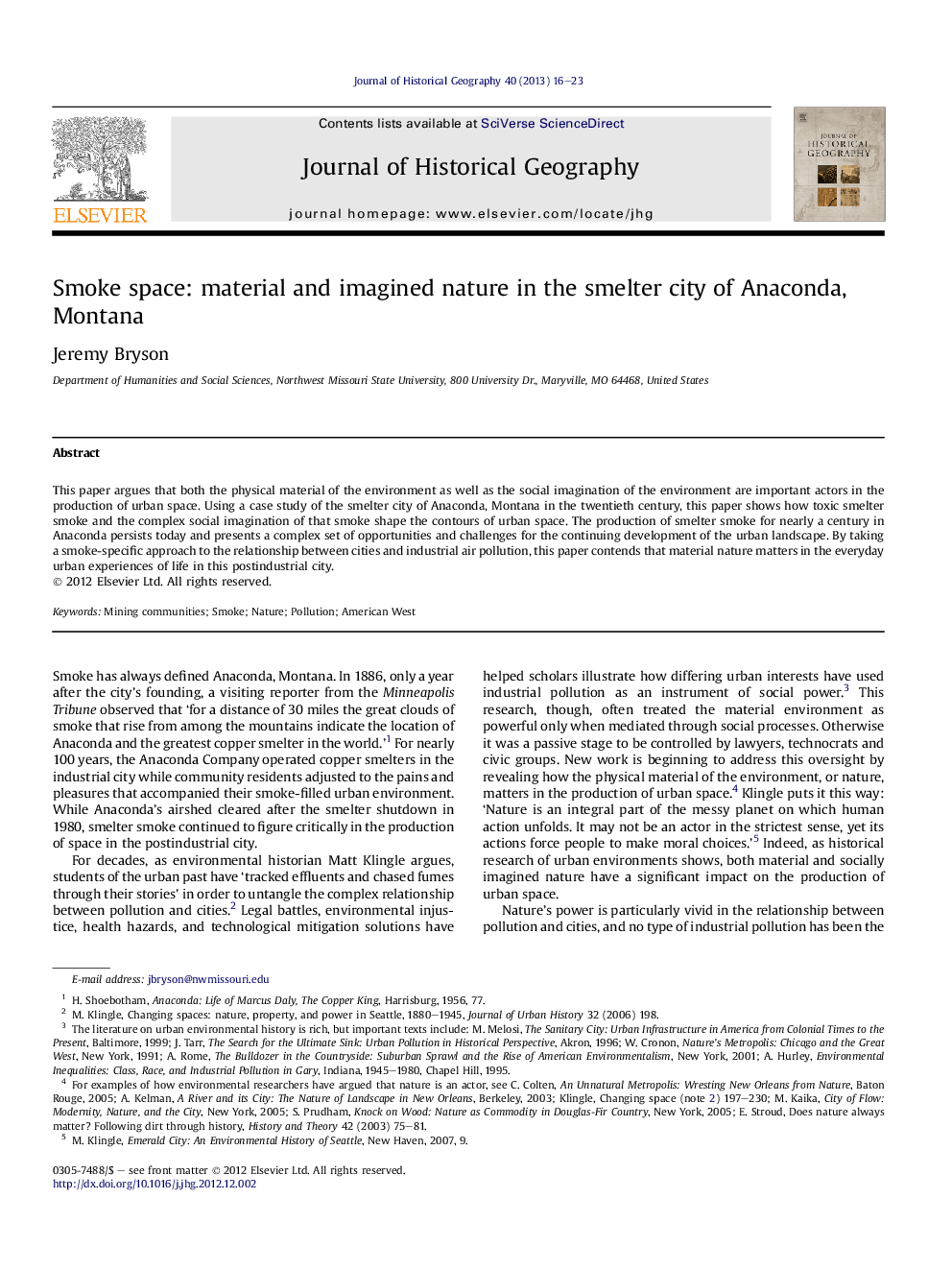| کد مقاله | کد نشریه | سال انتشار | مقاله انگلیسی | نسخه تمام متن |
|---|---|---|---|---|
| 1039099 | 1483985 | 2013 | 8 صفحه PDF | دانلود رایگان |

This paper argues that both the physical material of the environment as well as the social imagination of the environment are important actors in the production of urban space. Using a case study of the smelter city of Anaconda, Montana in the twentieth century, this paper shows how toxic smelter smoke and the complex social imagination of that smoke shape the contours of urban space. The production of smelter smoke for nearly a century in Anaconda persists today and presents a complex set of opportunities and challenges for the continuing development of the urban landscape. By taking a smoke-specific approach to the relationship between cities and industrial air pollution, this paper contends that material nature matters in the everyday urban experiences of life in this postindustrial city.
► Both physical and socially imagined nature act in the production of urban space.
► Smelter smoke has shaped city landscapes in Anaconda, Montana.
► A smoke-specific analysis of air pollution can add nuance to historical research.
Journal: Journal of Historical Geography - Volume 40, April 2013, Pages 16–23